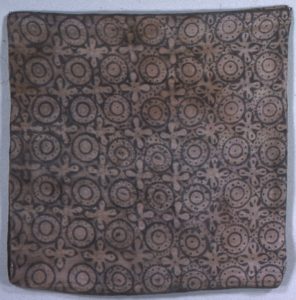Author: Sandra Sardjono
September is New York Textile Month! In celebration, members of the Textile Society of America will author Object of the Day for the month. A non-profit professional organization of scholars, educators, and artists in the field of textiles, TSA provides an international forum for the exchange and dissemination of information about textiles worldwide.
This textile belongs to a sacred cloth category called ma’a or mawa in the Toraja region of Central Sulawesi. Mawa is closely associated with the east and ceremonies that celebrates the rites of life and agricultural cycles. They vary in shapes, sizes and patterns; some are locally made, others imported. This indigenous mawa is highly unusual in its form, consisting of two seamless circular cloths that interlock like a chain. The reason for this form is unclear. The making of the circular cloths without seams entails a laborious process of manually inserting the wefts into the remaining unwoven warps after the piece has been taken off the loom. The pattern on this mawa relates to the theme of fertility and abundance. One example is the water buffalo, depicted here with a person inside a corral. In Toraja, water buffaloes are important symbols of wealth, measured by the expanse of their horns. Thus, while the body of the buffalo is drawn in profile, the head is rendered in aerial perspective in order to display the horns at full span. Surrounding the corral are crosses motif called doti langi or stars of heaven. Another pattern on this mawa depicts circles and flowers, motifs which may have derived from Indian trade textiles.

Sandra Sardjono recently completed her doctorate in Indonesian art history at the University of California, Berkeley.
